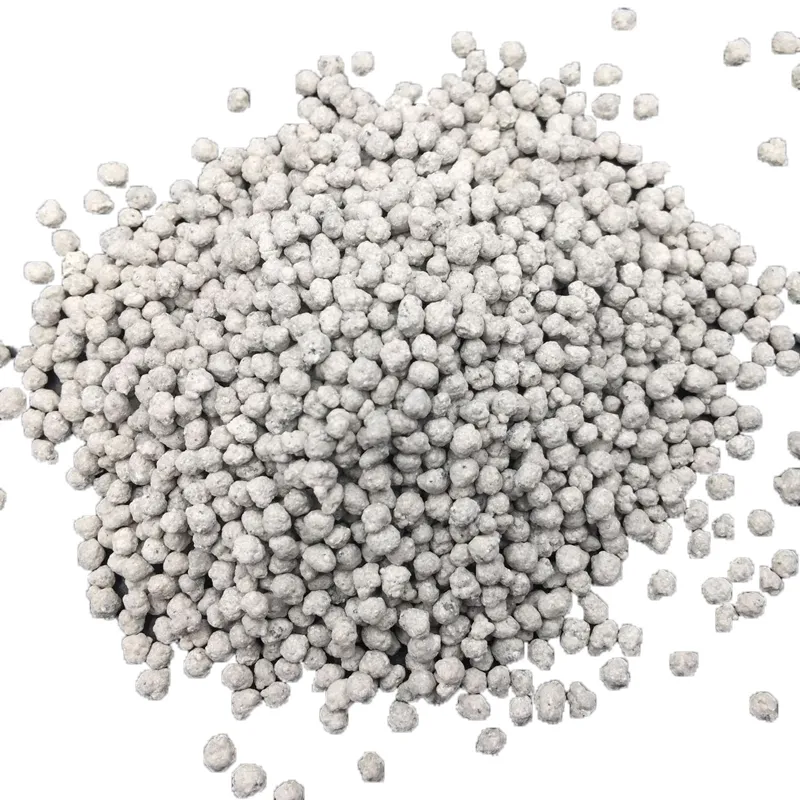
Mei . 23, 2025 09:31 Kembali ke daftar
Phosphate Fertilizer: Boosting Root Development and Crop Yields the Right Way
Phosphorus is one of the three core nutrients plants need to grow — alongside nitrogen and potassium. As a result, phosphate fertilizer plays a vital role in boosting early root growth, flowering, and overall crop health. Whether you're a farmer, distributor, or agribusiness owner, knowing when and how to apply phosphorus — and where to buy phosphate fertilizer in bulk — can make a big impact on productivity and soil health.

If you’re sourcing bulk phosphate fertilizer, this guide covers everything you need to know about types, benefits, application tips, and pricing.
What Is Phosphate Fertilizer?
Phosphate fertilizer is a type of fertilizer that contains phosphorus (P) in a form plants can absorb. It’s typically produced from mined phosphate rock and processed into various formulations suited for different crops and soil conditions.
Common phosphate fertilizers include:
|
Type |
Nutrient Content (P₂O₅) |
Form |
Notes |
|
Single Super Phosphate (SSP) |
16–20% P₂O₅ |
Granular |
Contains calcium and sulfur as well |
|
Triple Super Phosphate (TSP) |
44–48% P₂O₅ |
Granular or powder |
Higher concentration, used in base dressing |
|
DAP (Diammonium Phosphate) |
46% P₂O₅, 18% N |
Granular |
Excellent for starter fertilizer blends |
|
MAP (Monoammonium Phosphate) |
48–61% P₂O₅, 11% N |
Granular or water-soluble |
Fast-acting, low pH |
|
Rock Phosphate |
25–35% P₂O₅ (low solubility) |
Powder or granular |
Slow-release, often used in organic farming |
Why Use Phosphate Fertilizer?
Phosphorus is crucial for:
Early root development – Strong roots increase nutrient uptake
Energy transfer – Vital for photosynthesis and cell division
Flowering and fruiting – Encourages blooms and fruit set
Stress tolerance – Helps plants withstand drought and disease
Improved crop maturity – Uniform development and harvest times
Using phosphate fertilizer correctly leads to healthier crops, stronger yields, and more efficient use of water and other nutrients.
Bulk Phosphate Fertilizer: When Scale Meets Efficiency
For commercial farms, cooperatives, and agri-supply chains, ordering bulk phosphate fertilizer is the most efficient way to secure a reliable, cost-effective nutrient source.
Benefits of buying in bulk: ✅ Lower cost per ton
✅ Consistent supply throughout the season
✅ Custom packaging (bags, pallets, bulk tankers)
✅ Easier logistics and storage planning
✅ Compatible with custom NPK blending systems
Bulk orders typically start at 20 metric tons and are available in:
25kg or 50kg woven bags
500kg or 1000kg jumbo sacks
Loose granules for silo or bulk delivery systems
How to Buy Phosphate Fertilizer Smartly
When you’re ready to buy phosphate fertilizer, here’s what to consider:
|
Factor |
Why It Matters |
|
Type of fertilizer |
Choose based on crop, soil pH, and application method |
|
Granule size and solubility |
Affects uptake rate and compatibility with other fertilizers |
|
Packaging format |
Bulk or bagged based on storage and distribution needs |
|
Nutrient content (P₂O₅%) |
Higher concentration means lower application rates |
|
Origin and purity |
Ensure low heavy metal content and reliable phosphorus source |
Don’t forget to request:
COA (Certificate of Analysis)
MSDS (Material Safety Data Sheet)
SGS inspection (if importing internationally)
Application Tips for Phosphate Fertilizer
Apply at planting – Incorporate into the root zone for early uptake
Banding – Place fertilizer in a band 2–3 inches from seeds to avoid burning
Top-dressing – For perennial crops, apply on soil surface and water in
Fertigation – Use MAP for water-soluble feeding through irrigation systems
Pro tip: Phosphate binds to soil quickly, so placement is key. Over-application can lead to buildup and runoff — always apply based on soil test recommendations.
Phosphate Fertilizer Price Overview
Phosphate fertilizer price depends on:
Global market trends (supply chain, geopolitics)
Type of phosphate (SSP, TSP, DAP, MAP)
Packaging and shipping terms (FOB, CIF, etc.)
Order volume and delivery location
General price ranges (USD/MT as of current estimates):
|
Fertilizer Type |
Bulk Price Range (USD/MT) |
|
Single Super Phosphate (SSP) |
$160 – $250 |
|
Triple Super Phosphate (TSP) |
$350 – $500 |
|
DAP (Diammonium Phosphate) |
$500 – $700 |
|
MAP (Monoammonium Phosphate) |
$550 – $750 |
|
Rock Phosphate (raw) |
$90 – $150 |
Prices may fluctuate due to natural gas costs, shipping fees, and seasonal demand spikes — always confirm with your supplier.
Phosphate Fertilizer FAQs
Q1: What’s the difference between TSP and DAP?
A: TSP has a higher phosphorus concentration without nitrogen. DAP contains both nitrogen and phosphorus, making it ideal for starter applications.
Q2: Can I use rock phosphate on all crops?
A: Rock phosphate is slow-releasing and best for acidic soils or long-term soil building — not ideal for quick phosphorus uptake.
Q3: How often should I apply phosphate fertilizer?
A: Typically once per growing cycle, but depends on soil test results and crop needs.
Q4: Is phosphate fertilizer safe for organic farming?
A: Only certain types, like untreated rock phosphate or composted manures, are approved in certified organic systems.
Q5: How do I store bulk phosphate fertilizer?
A: Keep in a dry, ventilated area in moisture-proof bags or covered silos. Avoid stacking too high to prevent caking.
Whether you’re planting corn on 1,000 hectares or managing a local farm supply, phosphate fertilizer is critical to strong root systems and consistent harvests. Sourcing bulk phosphate fertilizer directly from a trusted supplier ensures better pricing, reliable quality, and year-round crop support.
-
Organic Pepper Fertilizer – Sustainable Growth for Healthier Crops and Soils
BeritaNov.25,2025
-
Sustainable Growth with Organic Phosphate Fertilizer | Benefits & Innovations
BeritaNov.24,2025
-
Organic Phosphorus and Potassium Fertilizer: Sustainable Soil Nutrition & Global Impact
BeritaNov.24,2025
-
Organic Phosphorus Fertilizer: Sustainable Nutrient Solutions for Modern Agriculture
BeritaNov.23,2025
-
Sustainable Growth with Organic Phosphorus Plant Fertilizer | HH Fertilizer
BeritaNov.23,2025
-
Organic Plant Meal Fertilizer for Sustainable Agriculture – Benefits & Innovations
BeritaNov.22,2025
